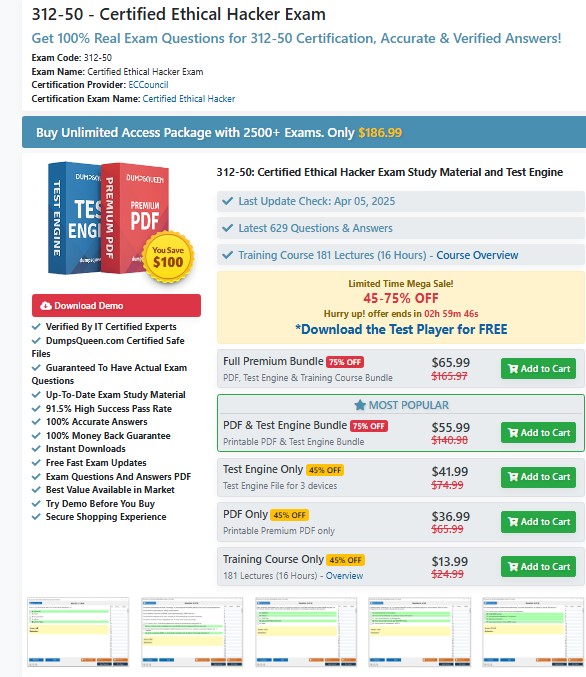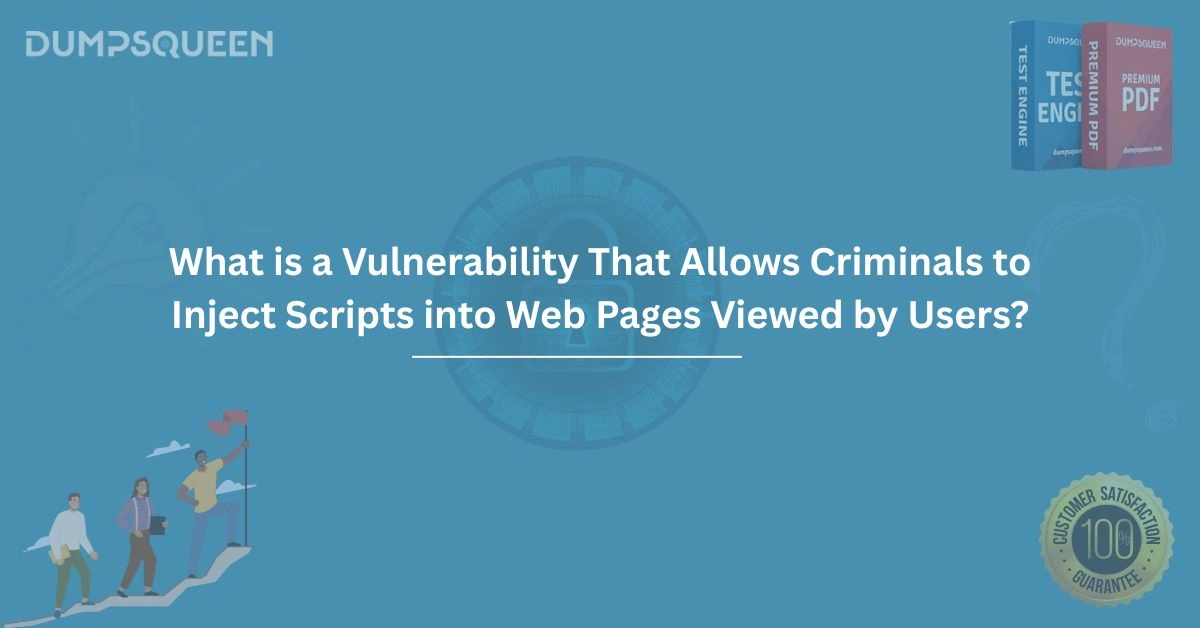Introduction
In the ever-evolving landscape of cybersecurity, web applications remain a prime target for malicious actors seeking to exploit vulnerabilities. One of the most insidious threats is a vulnerability that allows criminals to inject malicious scripts into web pages viewed by users. This type of attack, commonly known as Cross-Site Scripting (XSS), poses significant risks to user data, privacy, and trust in digital platforms. At DumpsQueen, we are committed to educating individuals and organizations about such threats to foster a safer online environment. This comprehensive guide delves into the nature of script injection vulnerabilities, their mechanisms, impacts, and prevention strategies, providing a thorough understanding for both technical and non-technical audiences.
What is a Script Injection Vulnerability?
A script injection vulnerability, primarily associated with Cross-Site Scripting (XSS), occurs when a web application fails to properly validate or sanitize user inputs, allowing attackers to inject malicious scripts—typically JavaScript—into web pages. These scripts are then executed in the browsers of unsuspecting users, enabling attackers to perform unauthorized actions, steal sensitive information, or manipulate the user experience. XSS vulnerabilities exploit the trust that a user’s browser places in a legitimate website, making them particularly dangerous.
At DumpsQueen, we emphasize the importance of understanding how these vulnerabilities work. When a user visits a compromised web page, the injected script runs within the context of that page, granting the attacker access to the same privileges as the legitimate scripts on the site. This can lead to severe consequences, such as session hijacking, phishing attacks, or the redirection of users to malicious websites.
How Do Script Injection Attacks Work?
Script injection attacks exploit weaknesses in the way web applications handle user inputs, such as form submissions, URL parameters, or cookies. Attackers identify entry points where untrusted data is processed and displayed without proper validation. For instance, a comment section on a blog that does not sanitize user inputs might allow an attacker to embed a malicious script within a comment. When other users view the comment, the script executes in their browsers.
There are three primary types of XSS attacks: stored, reflected, and DOM-based. Stored XSS involves injecting a script that is permanently stored on the target server, such as in a database, and executed whenever a user accesses the affected page. Reflected XSS occurs when the malicious script is embedded in a URL or form input and immediately reflected back to the user in the server’s response. DOM-based XSS manipulates the Document Object Model (DOM) directly in the user’s browser without server interaction. Each type presents unique challenges, but all rely on the failure to sanitize inputs effectively.
DumpsQueen advises developers to understand these attack vectors to implement robust defenses. For example, a poorly coded search feature that displays user inputs directly on a results page could reflect a malicious script if the input contains code like <script>alert('Hacked!')</script>. Such vulnerabilities are often subtle but can have devastating effects.
The Impact of Script Injection Vulnerabilities
The consequences of script injection vulnerabilities are far-reaching, affecting users, organizations, and the broader digital ecosystem. For individual users, XSS attacks can lead to the theft of sensitive information, such as login credentials, credit card details, or personal data stored in cookies. Attackers may also use injected scripts to impersonate users, perform actions on their behalf, or redirect them to phishing sites designed to harvest additional information.
For businesses, the repercussions are equally severe. A successful XSS attack can damage a company’s reputation, erode customer trust, and result in financial losses due to legal liabilities or remediation costs. Regulatory frameworks, such as the General Data Protection Regulation (GDPR), impose strict penalties for data breaches, making it critical for organizations to address vulnerabilities proactively. At DumpsQueen, we stress that failing to secure web applications can undermine even the most robust business strategies, as customers prioritize security in their online interactions.
Moreover, XSS vulnerabilities can serve as a gateway for more sophisticated attacks. For instance, an attacker might use an XSS exploit to deliver malware, compromise an entire network, or escalate privileges within a system. The ripple effects of such incidents highlight the need for comprehensive security measures.
Common Scenarios Exploiting Script Injection Vulnerabilities
Script injection vulnerabilities manifest in various real-world scenarios, often in places where user inputs are not adequately validated. One common example is a web forum where users can post messages or comments. If the platform does not sanitize inputs, an attacker could embed a malicious script in their post, which would execute whenever another user views the thread. Similarly, e-commerce websites with vulnerable search bars or product review sections are prime targets for reflected XSS attacks.
Another prevalent scenario involves social media platforms, where attackers exploit profile fields or direct messaging features to inject scripts. For instance, a malicious script embedded in a user’s profile bio could execute when other users visit their profile, potentially stealing session cookies or redirecting visitors to fraudulent sites. DumpsQueen’s cybersecurity resources highlight that even seemingly minor features, such as URL shorteners or embedded widgets, can become entry points for XSS attacks if not properly secured.
These scenarios underscore the importance of vigilance across all aspects of web development. Developers must anticipate how attackers might exploit user inputs and design systems to neutralize such threats.
Preventing Script Injection Vulnerabilities
Preventing script injection vulnerabilities requires a multi-layered approach that combines secure coding practices, robust testing, and ongoing monitoring. At DumpsQueen, we advocate for the following strategies to mitigate XSS risks effectively:
Input Validation and Sanitization
The cornerstone of XSS prevention is rigorous input validation and sanitization. Developers must ensure that all user inputs—whether from forms, URLs, or APIs—are validated against a strict allowlist of acceptable characters and formats. For example, a field expecting an email address should reject any input containing script tags or special characters unrelated to email syntax. Sanitization involves stripping or escaping potentially dangerous characters, such as < or >, to prevent them from being interpreted as code.
Output Encoding
Even with robust input validation, output encoding is critical to ensure that data displayed on web pages is rendered as plain text rather than executable code. For instance, encoding <script> as <script> ensures that it is displayed as text rather than executed as a script. Libraries like OWASP’s ESAPI or built-in functions in frameworks like React can automate output encoding, reducing the risk of human error.
Content Security Policy (CSP)
Implementing a Content Security Policy (CSP) is a powerful defense against XSS attacks. A CSP defines which sources of content (e.g., scripts, images, or stylesheets) are trusted, preventing the execution of unauthorized scripts. For example, a CSP directive like script-src 'self' restricts script execution to files hosted on the same domain, blocking injected scripts from external sources. DumpsQueen encourages organizations to adopt CSP as part of their security posture to limit the impact of XSS vulnerabilities.
Secure Development Frameworks
Using modern web development frameworks, such as React, Angular, or Vue.js, can reduce the risk of XSS by automatically handling input sanitization and output encoding. These frameworks are designed with security in mind, minimizing the likelihood of vulnerabilities when used correctly. However, developers must remain vigilant, as misconfigurations or custom code can still introduce risks.
Regular Security Testing
Proactive testing is essential to identify and remediate XSS vulnerabilities before they can be exploited. Automated tools, such as Burp Suite or OWASP ZAP, can scan web applications for potential vulnerabilities, while manual penetration testing provides deeper insights into complex attack vectors. DumpsQueen’s cybersecurity training programs emphasize the value of combining automated and manual testing to achieve comprehensive coverage.
User Education
While technical measures are critical, educating users about safe browsing practices can further reduce the impact of XSS attacks. Encouraging users to avoid clicking suspicious links, update their browsers regularly, and use security extensions can mitigate the risks of reflected or DOM-based XSS. DumpsQueen provides resources to help organizations educate their users effectively.
The Role of Developers and Organizations
Developers and organizations play a pivotal role in combating script injection vulnerabilities. For developers, adopting secure coding practices and staying informed about emerging threats is non-negotiable. This includes participating in training programs, following guidelines from organizations like OWASP, and leveraging tools to audit code for vulnerabilities. At DumpsQueen, we offer resources to support developers in building secure applications that withstand sophisticated attacks.
Organizations, on the other hand, must foster a culture of security by prioritizing cybersecurity in their development processes. This involves allocating resources for regular security audits, implementing secure software development lifecycles (SDLC), and ensuring that all employees are aware of their role in maintaining security. By integrating security into every stage of development, organizations can minimize the risk of XSS and other vulnerabilities.
The Future of Web Security
As web technologies continue to evolve, so too do the tactics used by attackers. Emerging trends, such as the increasing use of single-page applications (SPAs) and serverless architectures, introduce new challenges for securing web applications. At the same time, advancements in security tools, such as AI-driven vulnerability scanners and real-time threat detection systems, offer promising solutions for staying ahead of attackers.
DumpsQueen remains at the forefront of these developments, providing cutting-edge resources and insights to help individuals and organizations navigate the complex landscape of web security. By staying proactive and informed, we can collectively reduce the prevalence of script injection vulnerabilities and create a safer digital world.
Conclusion
Script injection vulnerabilities, particularly Cross-Site Scripting (XSS), represent a significant threat to the security of web applications and the users who rely on them. By understanding how these vulnerabilities work, their potential impacts, and the strategies to prevent them, organizations can build more secure digital experiences. At DumpsQueen, we are dedicated to empowering developers, businesses, and users with the knowledge and tools needed to combat these threats effectively. Through secure coding practices, proactive testing, and ongoing education, we can mitigate the risks of XSS and foster a safer online ecosystem. Visit DumpsQueen for more resources and insights to strengthen your cybersecurity defenses.
Free Sample Questions
-
What is the primary cause of Cross-Site Scripting (XSS) vulnerabilities?
a) Excessive server bandwidth
b) Improper validation of user inputs
c) Outdated browser versions
d) Lack of firewall protection
Answer: b) Improper validation of user inputs -
Which of the following is a type of XSS attack?
a) SQL Injection
b) Stored XSS
c) Brute Force Attack
d) Denial-of-Service Attack
Answer: b) Stored XSS -
How can a Content Security Policy (CSP) help prevent XSS attacks?
a) By encrypting user data
b) By restricting the sources of executable scripts
c) By increasing server response time
d) By disabling user inputs
Answer: b) By restricting the sources of executable scripts -
What is the purpose of output encoding in web security?
a) To compress data for faster loading
b) To ensure data is displayed as text rather than code
c) To authenticate user identities
d) To optimize database queries
Answer: b) To ensure data is displayed as text rather than code



